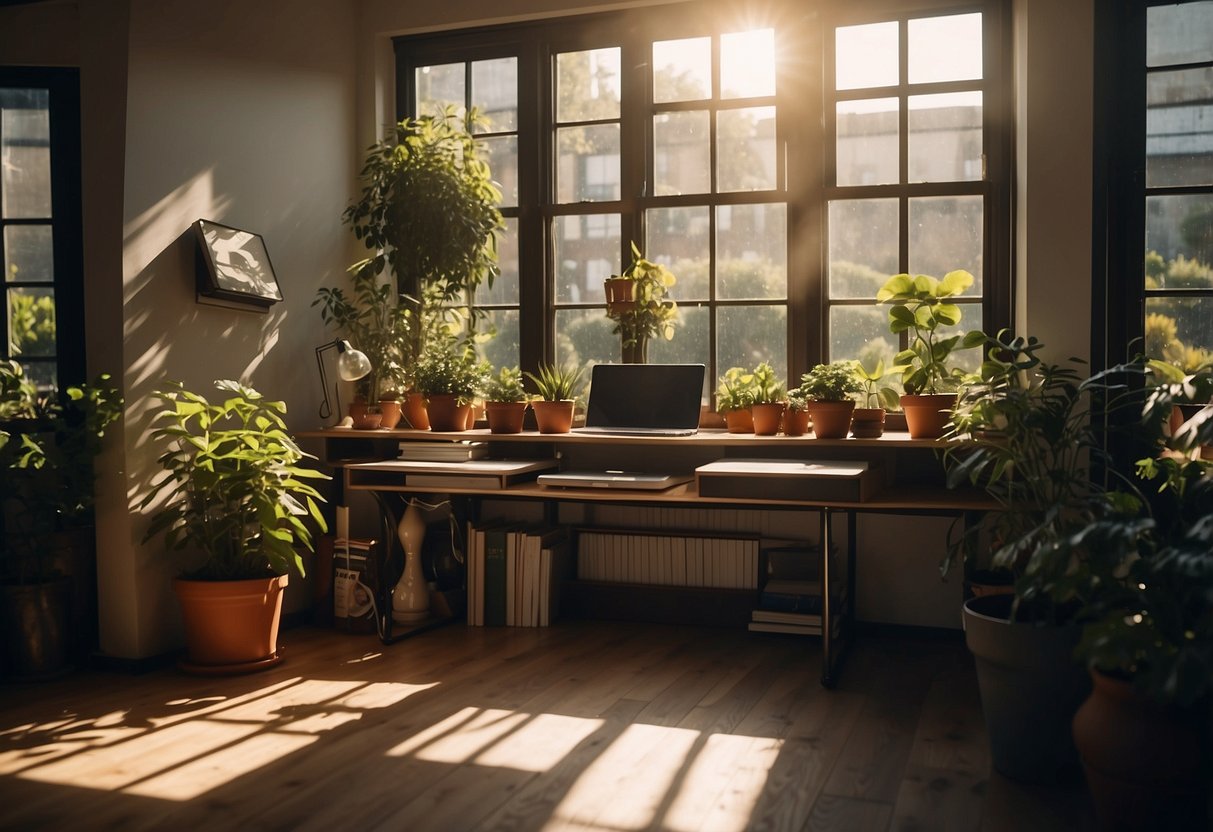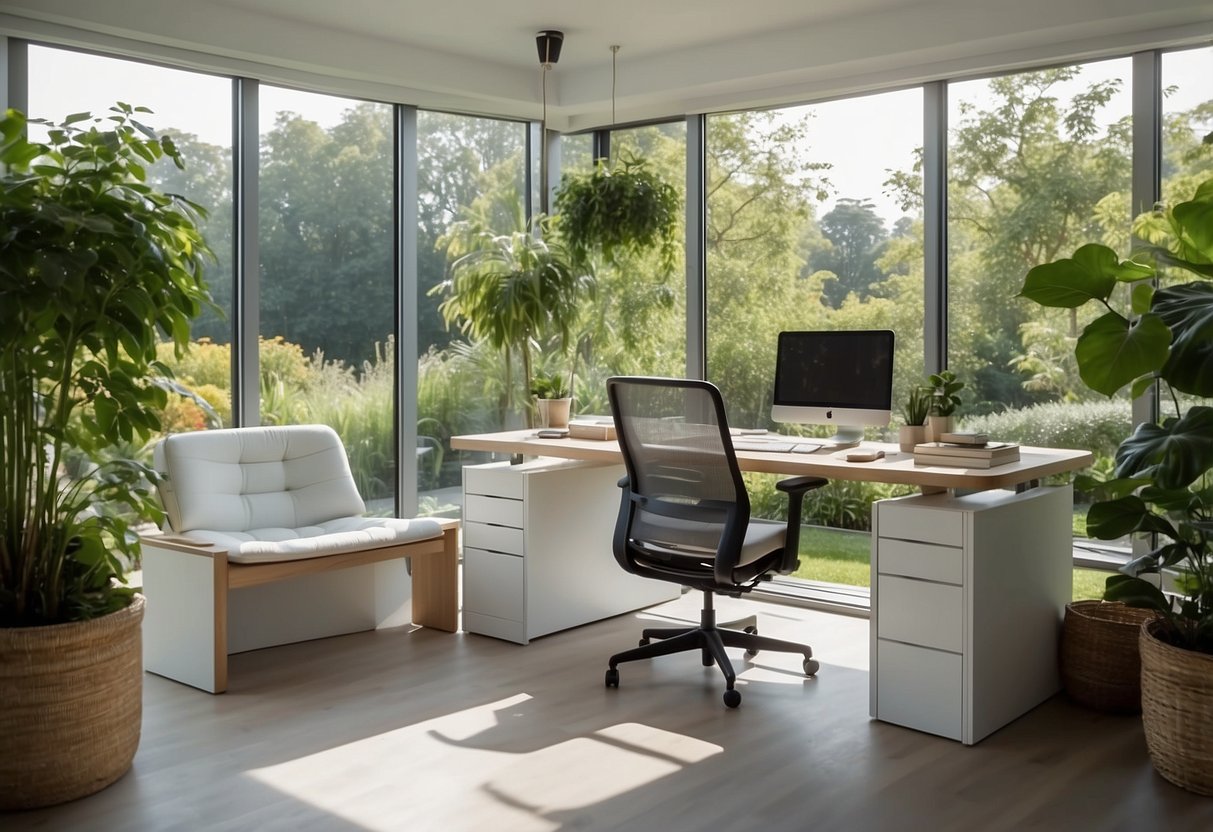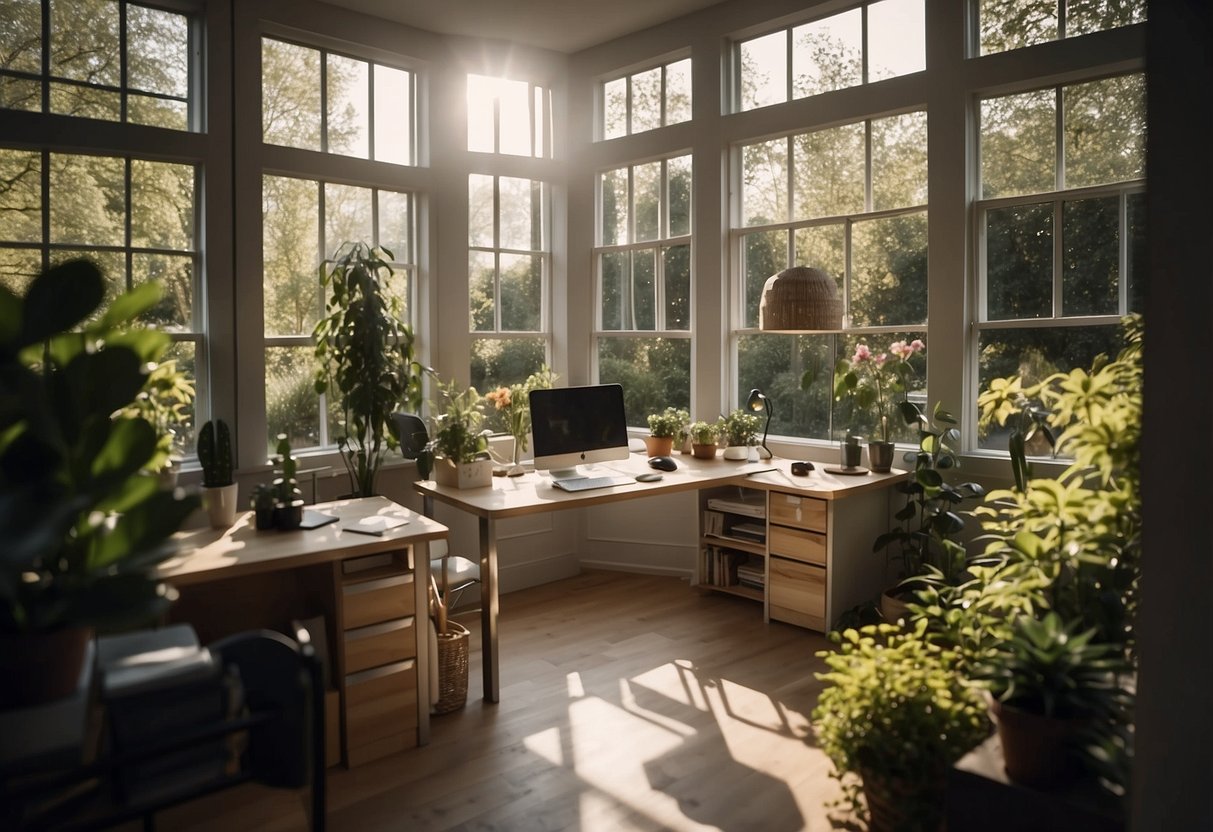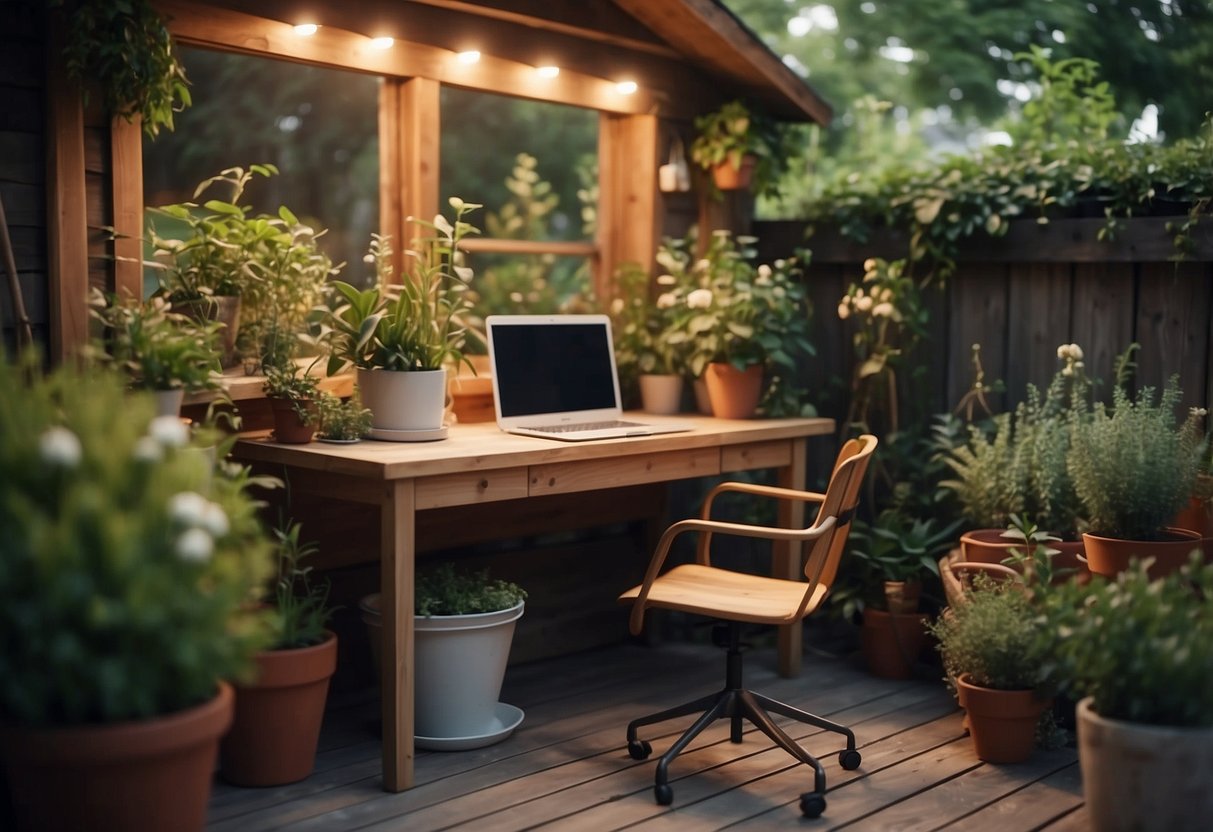Garden Office Tips: Creating a Productive Outdoor Workspace
Transforming a part of your garden into an office can be an exciting project. Whether you’re working from home or need a quiet space for creative work, a garden office offers potential benefits. Imagine stepping outside your door and into a peaceful workspace surrounded by nature.

Why consider a garden office? It provides a dedicated area where you can focus without the distractions of the main house. By setting up a garden office, you create a perfect balance between professional productivity and the tranquility of the outdoors.
1) Maximize Natural Light

When setting up your garden office, focus on ways to boost natural light. Opt for floor-to-ceiling glass walls to let in as much light as possible.
Replace solid doors with glazed ones to borrow light from other rooms.
Consider adding mirrored surfaces to reflect and amplify the light that does come in. This creates a bright, inviting space for work.
2) Install Double-Glazed Windows

Double-glazed windows are a great addition to your garden office. They help keep your office warm in the winter by reducing heat loss. In the summer, they can block out the heat, keeping your space cool.
These windows also reduce noise, making your office quieter. This is perfect if you need a peaceful work environment. You can find options at various price points, from small windows for $300 to $750 to larger ones for $650 to $4,500.
If you like DIY projects, you might want to install them yourself. It’s vital to ensure that you order the correct size to fit your frames perfectly.
3) Use Ergonomic Furniture

Choosing the right furniture is crucial for your comfort. An ergonomic chair supports your back and reduces strain. Look for one with adjustable height and lumbar support.
Don’t forget about your desk setup. An ergonomic split V-shape keyboard and mouse can help prevent muscle strains. A good desk should be at a height where you can type easily without hunching over.
Keep these tips in mind to make your garden office a comfortable and productive space.
4) Incorporate Greenery

Adding plants to your garden office can create a relaxing and refreshing atmosphere. Plants like the Golden Pothos are easy to care for and thrive in indoor settings. These plants can be placed in hanging planters or vases to add a touch of nature to your workspace.
Consider placing some lush greenery around your office to improve air quality and boost your mood. For inspiration, check out some offices with integrated greenery.
5) Soundproof Your Space

Creating a quiet garden office is important for focus. Start by planting hedges or trees around your workspace. This natural barrier reduces noise.
You can also build a big fence or wall to block sounds. Materials like acoustic panels help too.
Adding a water feature not only looks nice but also masks unwanted noise.
6) Add Personal Touches

Make the space uniquely yours. Add photos, artwork, or decorations that reflect your style. It doesn’t have to be fancy, just things that make you happy.
Consider adding a cozy rug or a favorite chair. These small touches can make a big difference in comfort.
Personal items like a favorite mug or desk plant can bring a sense of home to your garden office. Personalization helps create a space where you feel truly comfortable and productive.
7) Set Up Proper Ventilation

Good ventilation is key to a comfortable garden office. Ensure you have vents that cover about 15-20% of your office’s floor space. This keeps the air fresh and prevents stuffiness.
Using fans helps with air circulation. Consider a small, quiet fan to keep the air moving. On warmer days, opening doors and windows can help improve airflow.
Managing humidity is also important. A small humidistat can help you monitor and adjust the humidity levels to keep your office environment pleasant.
8) Ensure Reliable Wi-Fi

Getting a strong Wi-Fi signal in your garden office can make working from home much easier. One solution is using powerline adapters. These devices use your home’s electrical wiring to deliver internet to your garden office.
Another option is a Wi-Fi extender. It boosts your home’s Wi-Fi signal to reach further distances. This can help if your office is not too far from the router.
Alternatively, consider a 4G or 5G mobile router if your regular Wi-Fi is not strong enough. This can be a good backup or primary solution if you have a good mobile signal.
9) Invest in Quality Lighting

Good lighting is key to a productive garden office. Combining ambient, task, and accent lighting creates a balanced and inviting space.
Choose fixtures built to withstand weather, like those suggested in these professional tips.
Path lights, uplights, and wall lights can work together to cast a warm glow, making your garden office a cozy retreat.
10) Create a Cozy Corner

A cozy corner in your garden office can make work feel more relaxed and enjoyable. Think about adding a comfy chair or bean bag.
Accent this space with soft pillows and a warm throw blanket.
Consider surrounding the area with plants for a touch of nature. It’s like having a small retreat within your workspace. For more tips, check out these garden office ideas.
Designing Your Garden Office

Creating the perfect garden office involves carefully selecting the right location and balancing aesthetics with practicality. It’s important to find a spot that offers both comfort and inspiration.
Choosing The Right Spot
Selecting the right spot for your garden office is crucial. Look for a location that is quiet and peaceful. This helps you stay focused on your work. Ensure it’s far enough from the main house to offer privacy. Natural light is essential; choose a place that gets plenty of it. This can boost your mood and productivity.
You should also consider the view from your office window. A pleasant outlook can make your workday more enjoyable. Make sure the ground is level, and if not, you may need to do some groundwork to prepare.
Having easy access to your garden office is also important. A short, well-lit path can make a big difference, especially if you’re working late or in bad weather.
Balancing Aesthetics And Functionality
Balancing looks with practicality in your garden office design is key. Think about the style and materials you’ll use. For example, using floor-to-ceiling glass can maximize light and garden views. This makes your office feel like a part of the garden.
Interior layout matters too. Sketch out your ideas, even if you’re not great at drawing. Plan where each piece of furniture will go. Make sure there’s enough space for all your work essentials.
Multi-functional designs can improve your office’s usability. Consider adding distinct “zones” – an L-shaped design can create areas for different tasks. Opt for sustainable, energy-efficient materials to build your garden office, which is not only good for the environment but can also save on energy costs.
Maximizing Comfort

Creating a comfortable garden office can boost your productivity and well-being. Focus on ergonomic furniture and proper climate control to ensure that your workspace is both functional and inviting.
Ergonomic Furniture
Ergonomic furniture is essential to prevent discomfort and injuries while working. Start with an adjustable chair that supports your lower back and promotes good posture. Chairs with adjustable armrests and seat height can help ensure proper alignment.
A desk at the right height is equally important. Consider an adjustable standing desk that allows you to alternate between sitting and standing throughout the day. This can reduce the strain on your back and improve circulation.
Add a footrest under your desk to relieve pressure on your legs. Make sure your computer monitor is at eye level to avoid neck strain. Position your keyboard and mouse so your wrists are straight and relaxed.
Climate Control Solutions
Maintaining a comfortable temperature is key to a pleasant work environment. Insulating your garden office can help keep it at a consistent temperature. Use weather-stripping on doors and windows to prevent drafts.
Consider installing a heater for the cold months and an air conditioner for the summer. Portable heating and cooling units can provide flexibility and are easy to install.
A dehumidifier can help manage moisture levels, preventing mold and making the air feel cooler. Conversely, a humidifier can add moisture to the air in dry climates.
Windows that can be opened are useful for ventilation. Blinds or curtains can help manage sunlight and keep your office cool in the summer.
Creating a comfortable garden office can greatly enhance your productivity and overall satisfaction with your remote work environment.







